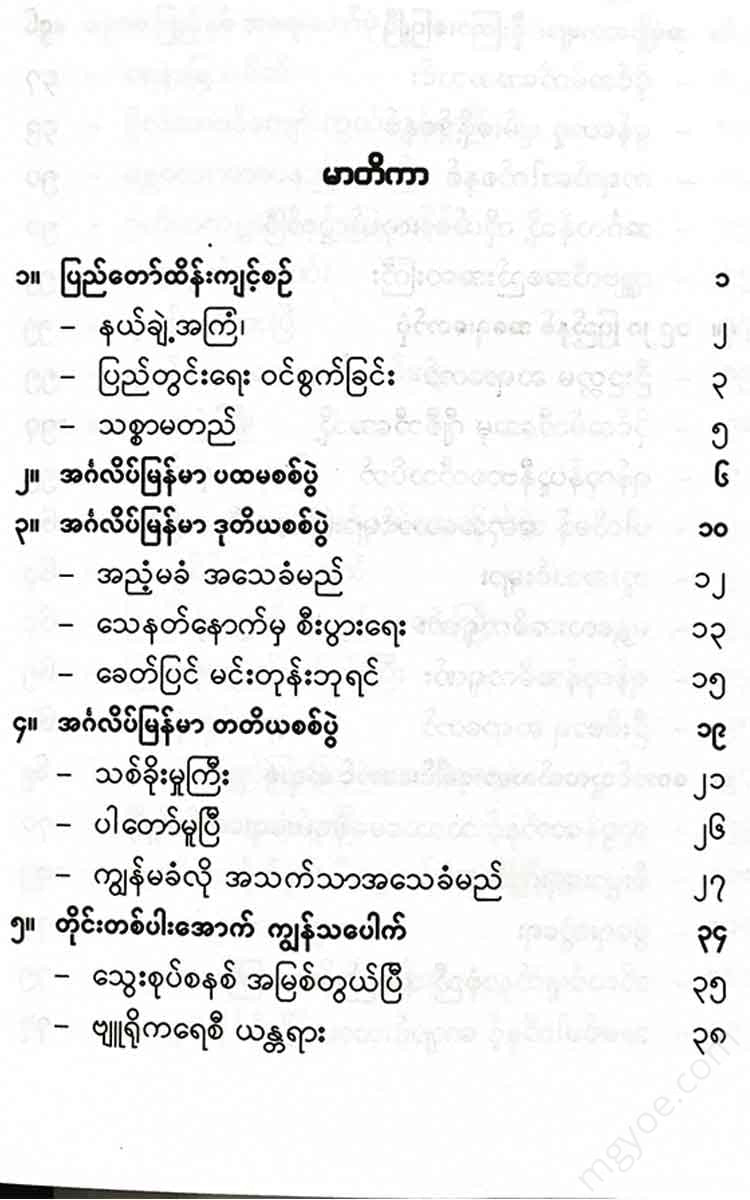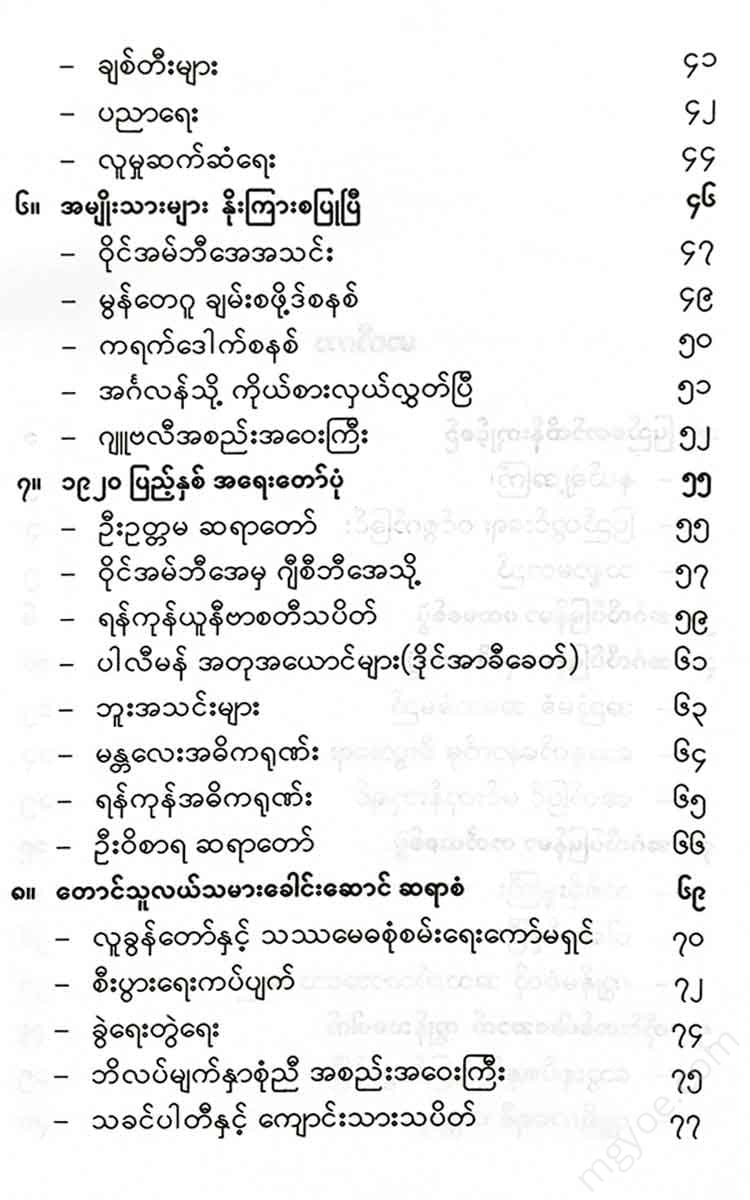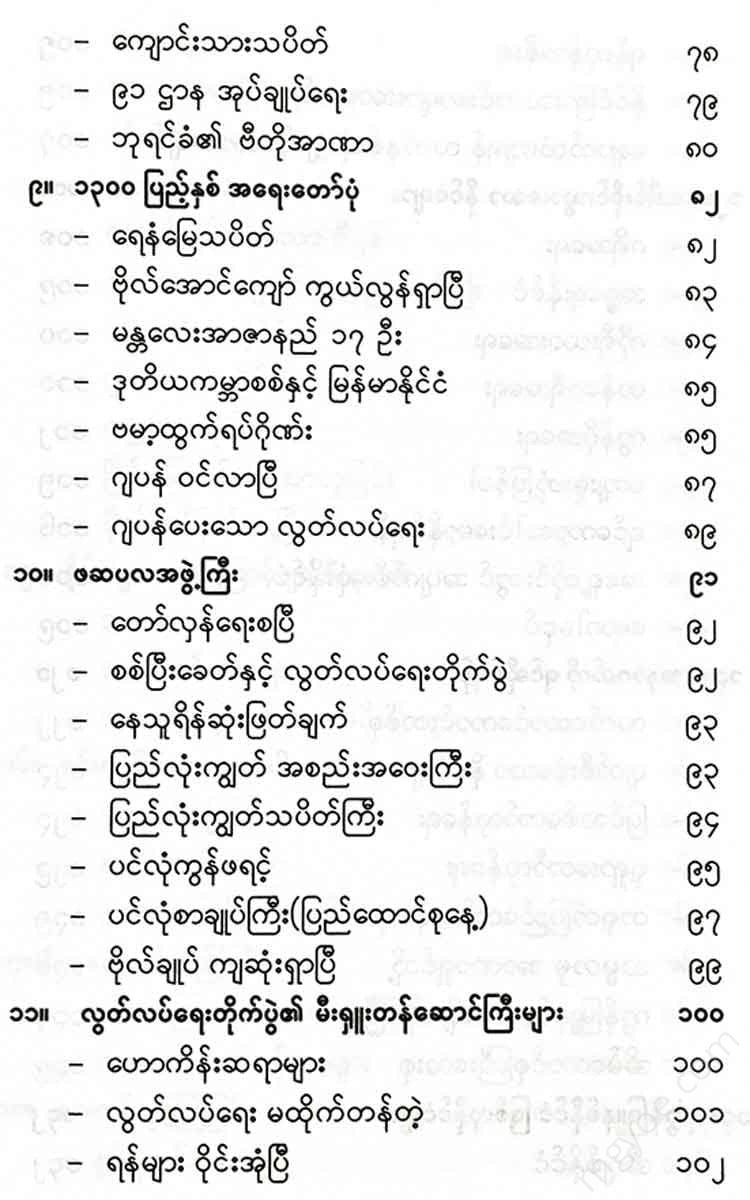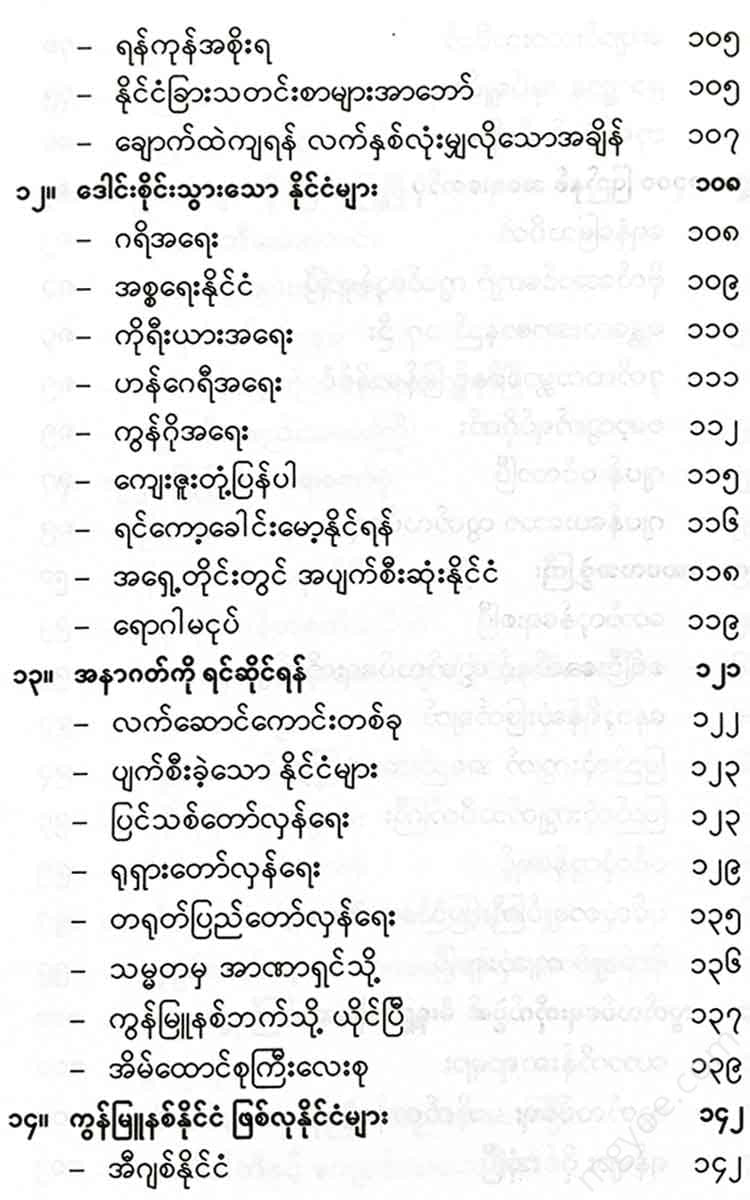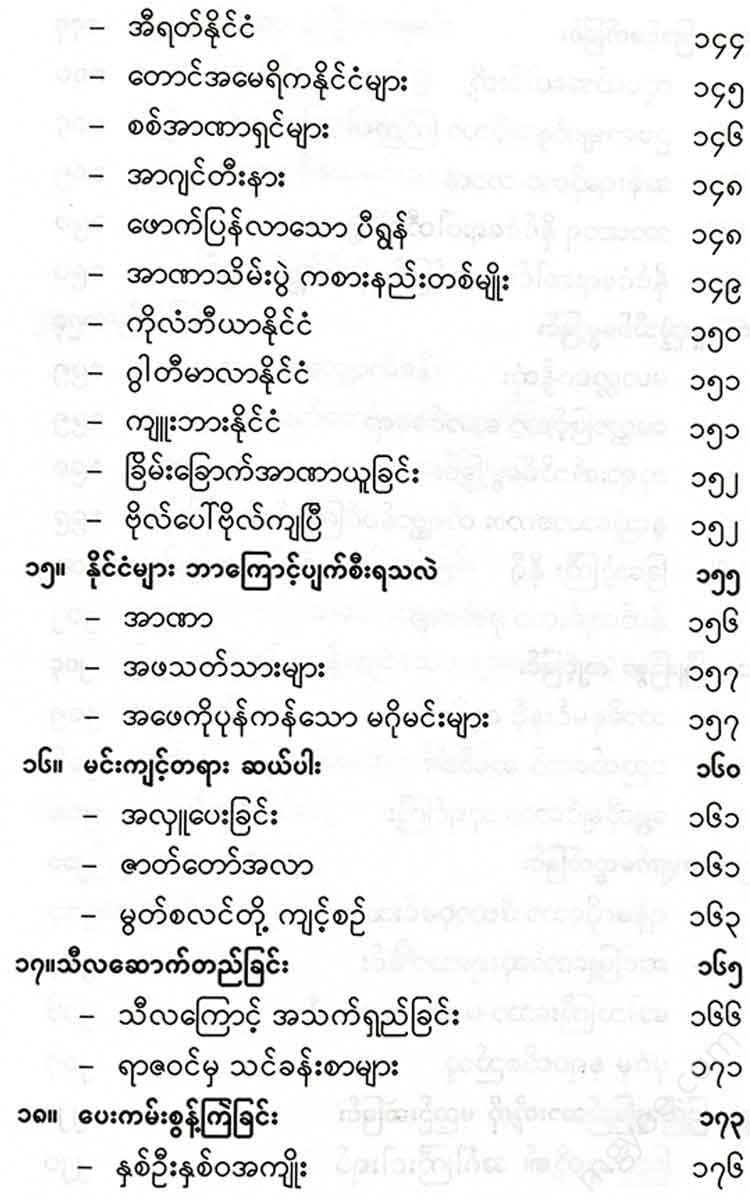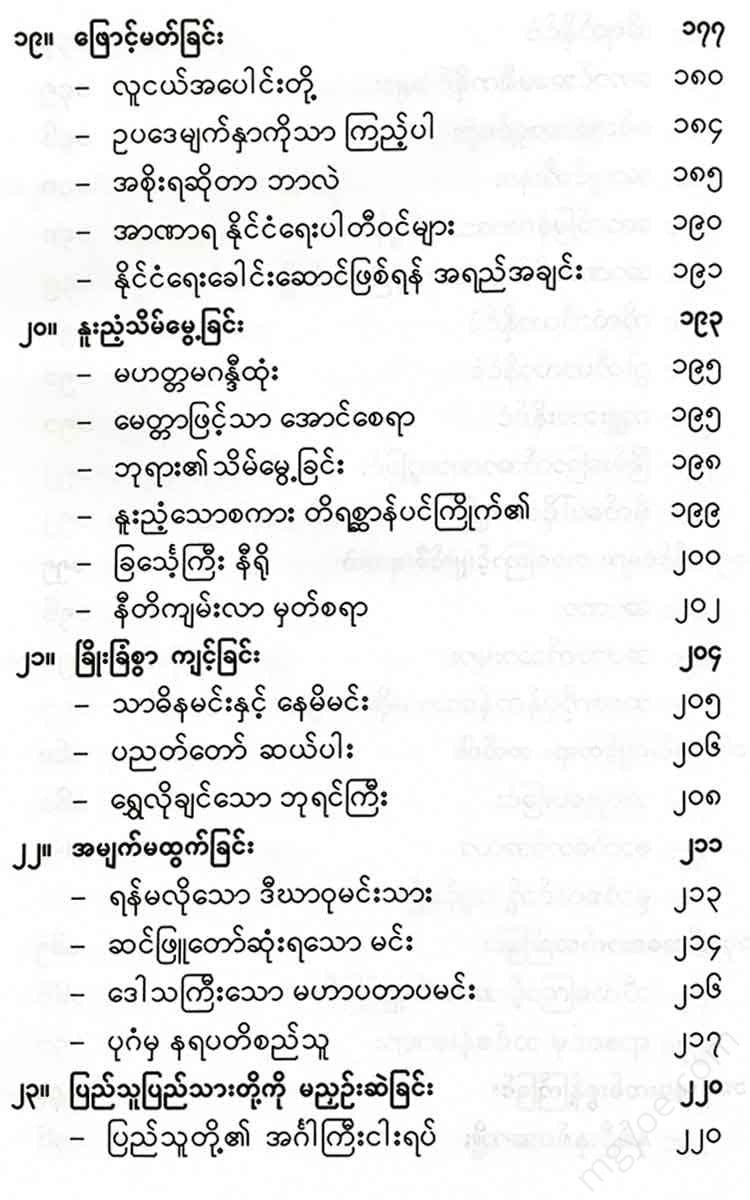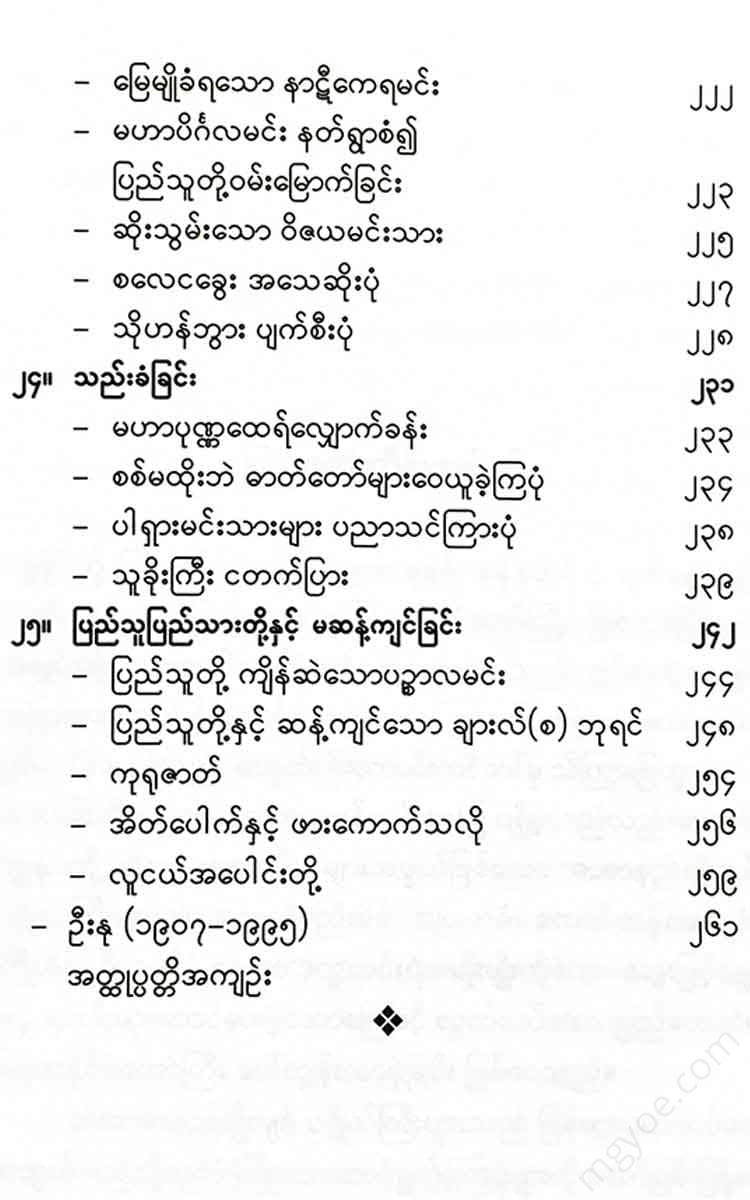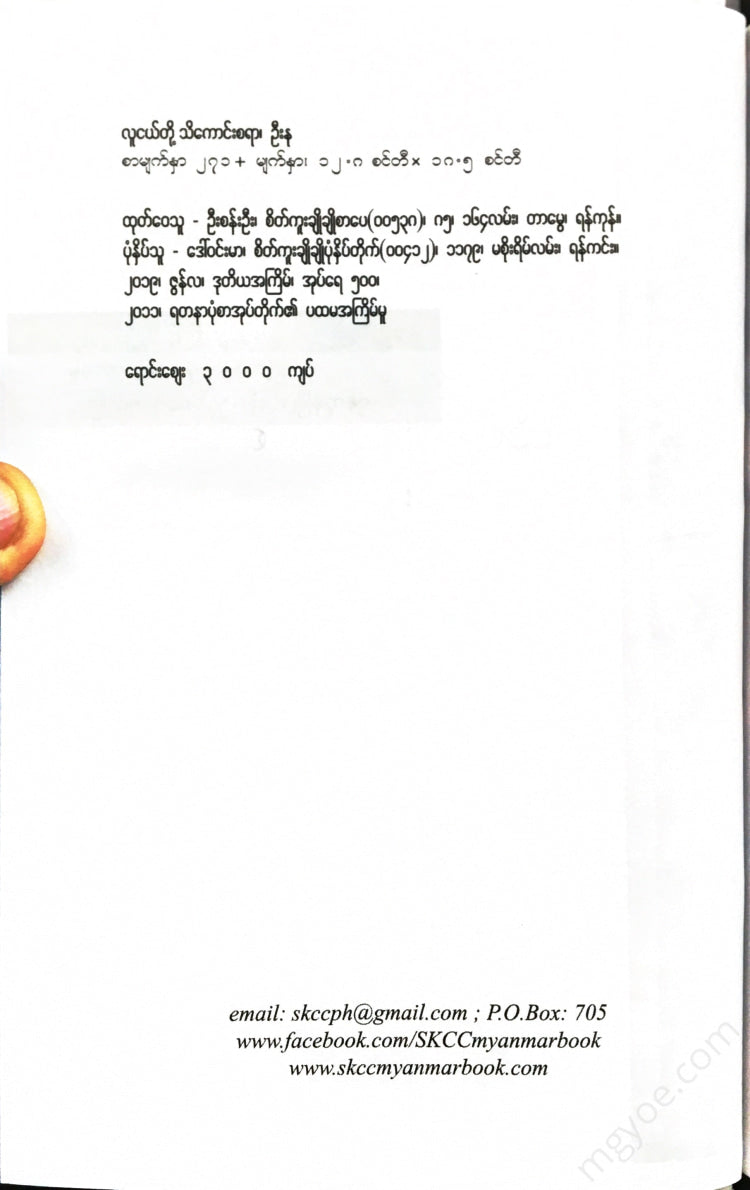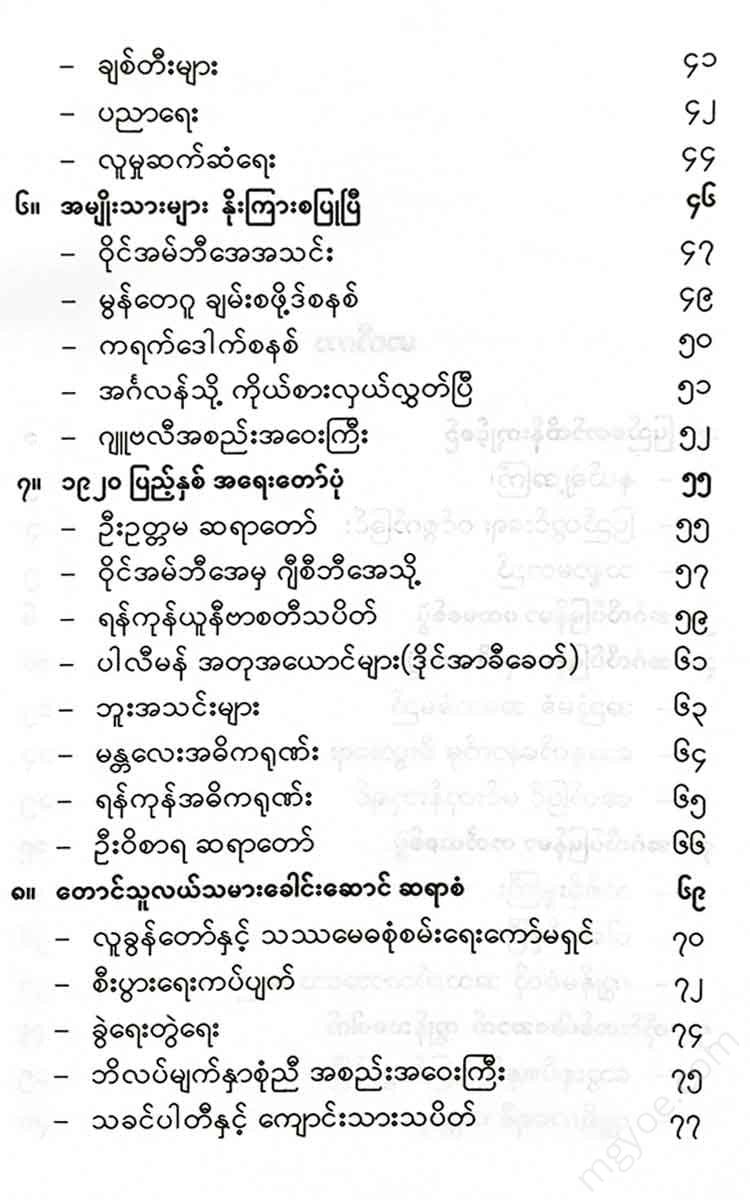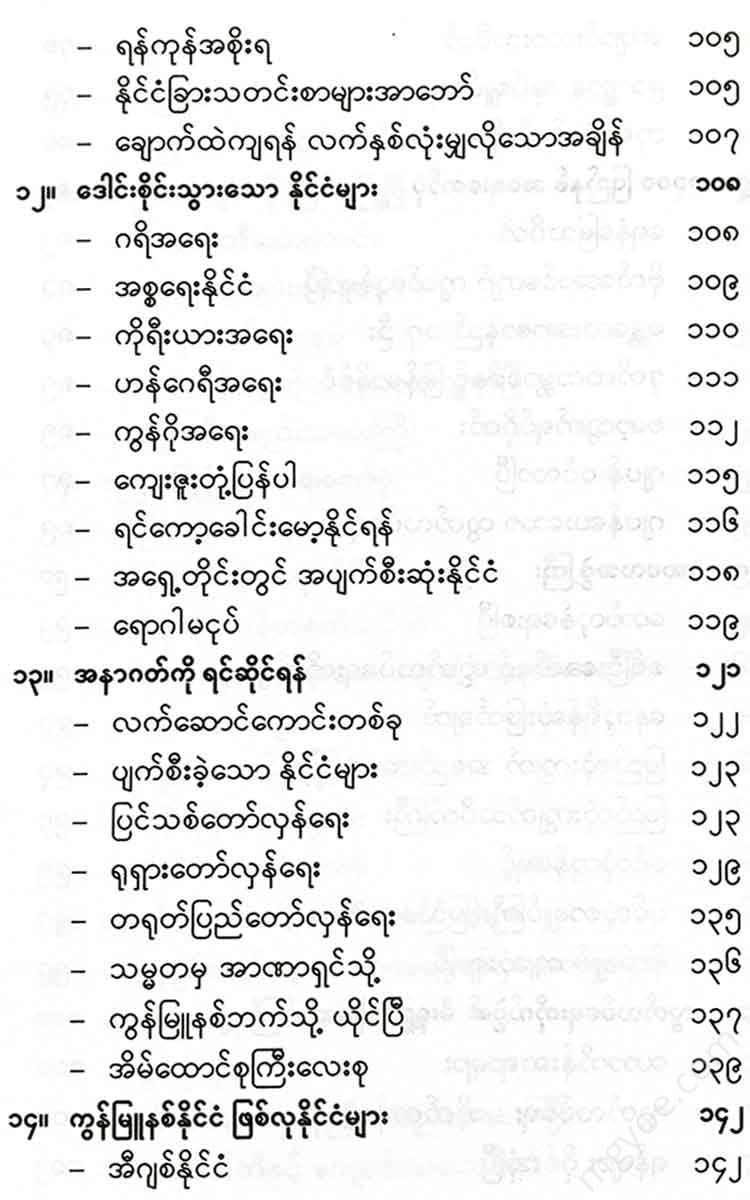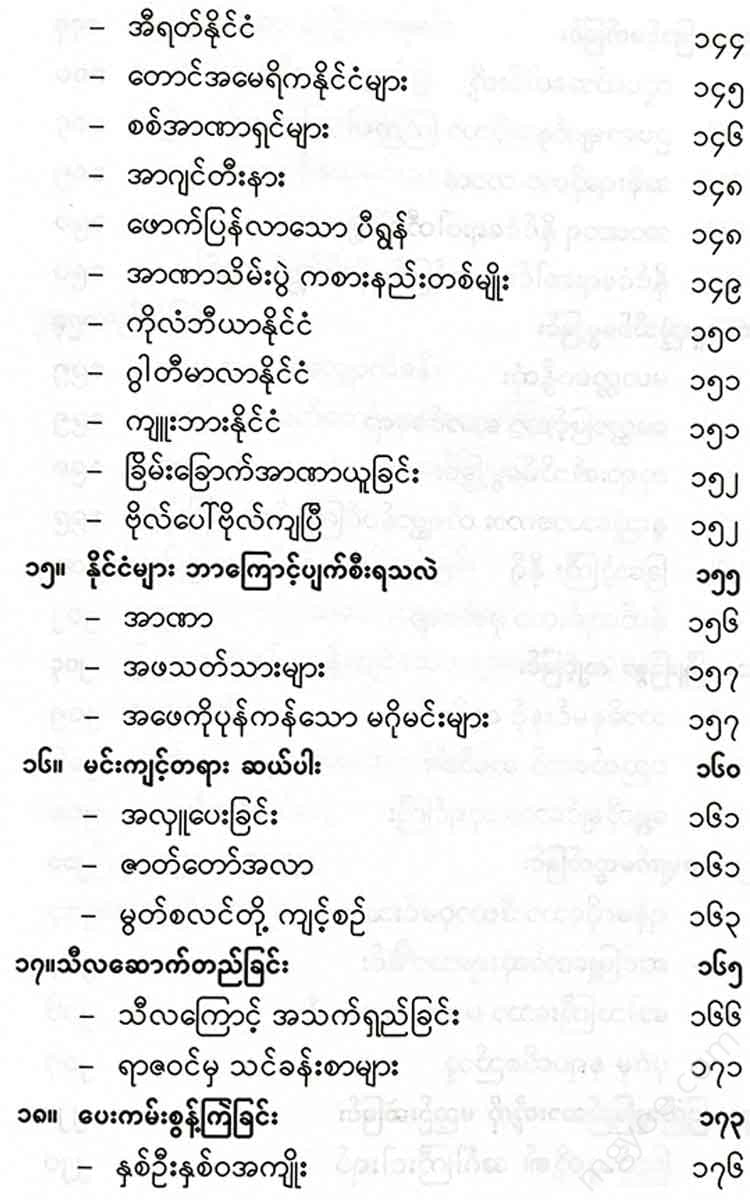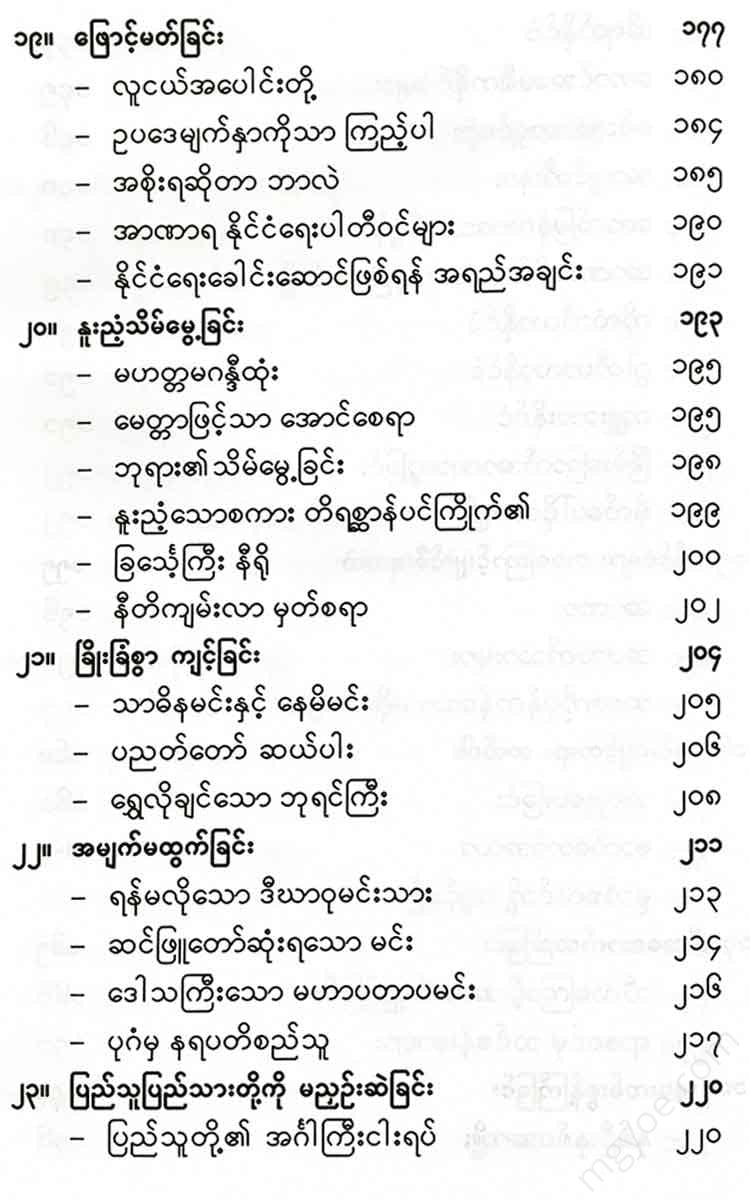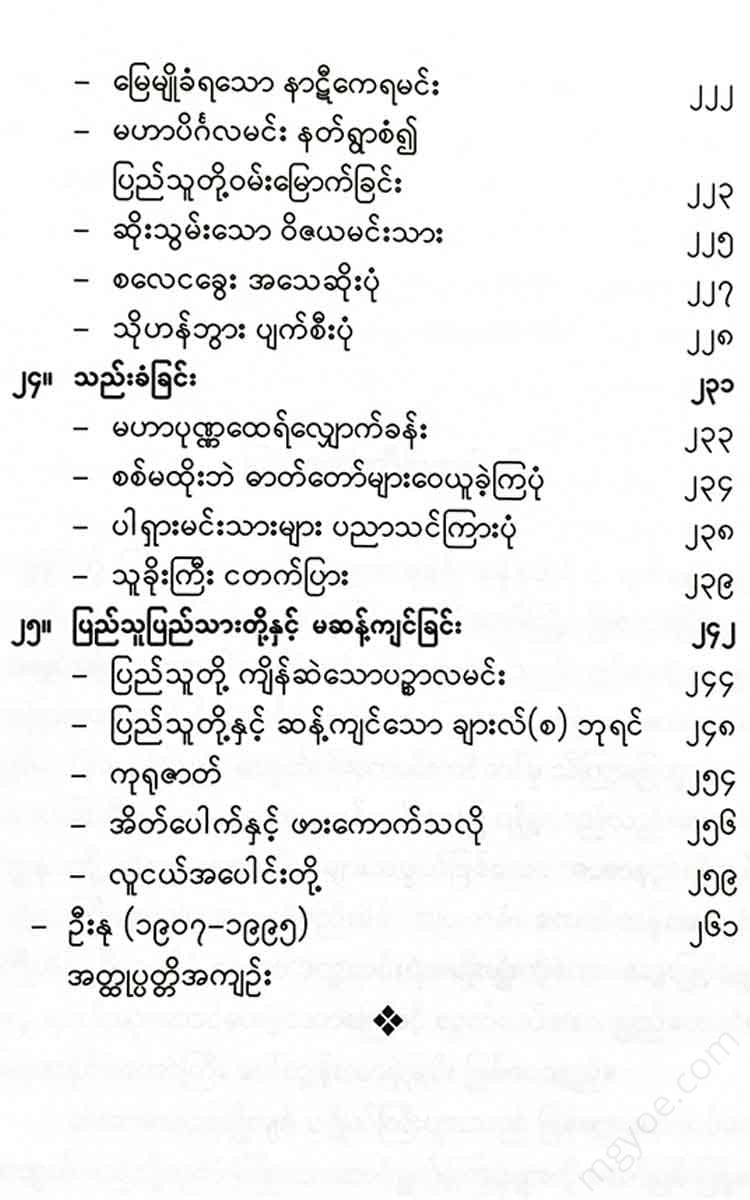စိတ်ကူးချိုချိုစာပေ
U Nu - Good news for young people
U Nu - Good news for young people
Couldn't load pickup availability
The practice of governing the country
Our country, Myanmar, became an independent and sovereign state on January 4, 1948. The establishment of such a sovereign state did not happen by chance, nor did it come about by the gods and goddesses in the sky. It was the great patriotic martyrs like our ancestors and parents who endured various hardships, including losing their lives, being imprisoned, and being hanged, and thus the independent Union of Myanmar emerged.
Before describing how these great martyrs and patriots worked for Myanmar's independence, I would like to briefly describe how the Myanmar state lost its sovereignty and lived as a slave under foreign rule for almost a hundred years.
Colonialism
In 1497, the Portuguese Vasco da Gama crossed the Indian Ocean and discovered a sea route from Europe to the East. After that, Europeans such as the Dutch, the English, and the French gradually arrived in the East. They did not come to the East, including our country, as pilgrims. They came for the sake of trade, finding new pastures, and expanding their territories.
After arriving, they first established themselves by petitioning and requesting land from the kings, dukes, and other chieftains of the countries they visited, giving gifts, and attacking with weapons.
After that, they gradually began to interfere in the internal affairs of the countries they could rely on. For example, when there was a dispute between the local rulers, or when there was a dispute between the king and his brother, son, duke, or duke, they would support and encourage the side that would have the better of them. By fighting each other in this way, when both sides became weak, they would act in such a way that the weakened state or country would come under their control sooner or later.
In 1599, the English established the East India Company to trade with the East. In 1602, the Dutch established another company called the East India Company. In 1604, the French established a similar company. At that time, the Portuguese had already occupied Goa on the east coast of India for about a hundred years.
In 1519, the Portuguese opened a trading post in Mottama. In 1627 (during the reign of the late King of the West), the English East India Company and the Dutch East India Company opened small trading posts in Myanmar. The English posts were in Thanlyin, Inwa, Bhamo and Pyay, while the Dutch posts were in Thanlyin, Bago and Inwa.
Intervention in internal affairs
After a short time, as mentioned above, the group of traders who had arrived in Myanmar began to interfere in the internal affairs of Myanmar.
In about 902 CE, when Tabin Shwe Htee was marching against Mottama, a large number of Portuguese joined the attack on Mottama. At about the same time, the Portuguese were also interfering in internal affairs in Rakhine and even trying to invade and conquer Rakhine. However, when the Rakhine people put up a brave fight, the Portuguese surrendered and began to serve under the Rakhine king. Philip de Brito (aka Nga Zinka) was a trusted servant of the Rakhine king, Min Raja Gyi. When the king left him as his representative in Thanlyin, he drove out the Rakhine people, captured the fort and the fort, and then occupied Thanlyin. When De Brito gained a foothold in Thanlyin, he joined forces with Mottama and even attacked Taungoo. De Brito is a man who has caused a stir in Burmese history.
Around 187 AD (1049 Burmese), during the reign of King Wanbe San, the country was in turmoil due to the fighting between the Burmese and Mon people. The British East India Company attacked and seized Hai Gyi Island near Pathein with a large force of weapons.
Unfaithful
During the reign of King Alaungma, when the Mon and Burmese were at odds, the British and French sometimes helped the Burmese and sometimes helped the Mon. They tended to favor whichever side they thought was the better side, and both the Mon and Burmese became distrustful.
Finally, when it became clear that the British were not keeping their promises, King Alaungmin Dagyi U Aung Zeya ordered the British fort and warehouses on Hai Gyi Island to be attacked and destroyed.
This is enough to understand how the Europeans who arrived in Burma before the outbreak of the Anglo-Burmese Wars viewed Burma.


